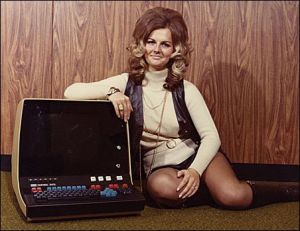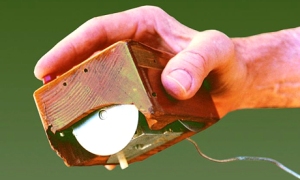The future is a pretty groovy place.
 In the beginning there is always the question: “How do we get there from here?” The answer almost always seems to be: “In a series of somewhat clumsy steps, with some mistakes and through the support of others.” We never know what will be the final outcome as we journey through the process of discovery and it is this mystery that moves us through all things. This truth manifests itself not only in our literal personal journeys through life; but also in the way that we create, and how we interact with our creations.
In the beginning there is always the question: “How do we get there from here?” The answer almost always seems to be: “In a series of somewhat clumsy steps, with some mistakes and through the support of others.” We never know what will be the final outcome as we journey through the process of discovery and it is this mystery that moves us through all things. This truth manifests itself not only in our literal personal journeys through life; but also in the way that we create, and how we interact with our creations.
When we look at the history of interface design; specifically the design of interactivity between computers their users and other users and their computers, we see a journey that began with a few curious people asking good questions.
Like Doug Englebert who wondered how to get beyond the keyboard when interacting with a computer screen. His doodles sketched at a conference, of a device that could “roll in one direction and slide sideways in the axis at ninety degrees” became years later what we use “to select objects on a computer screen.” (Moggridge, 17) But not without clumsy steps, probably a few mistakes, and the support of others, in this case the help of co-creator Bill English.
 Once it was possible to move objects around on a screen new ways to design interactivity became possible. Coupled with the advancement of the bitmap display it became possible to manipulate both text and the early prototypes of icons around what was being understood as the “office” or “desktop schematic” within the screen. (Moggridge, 19) The mouse was significant because it allowed for multiple ways to interact withing a system. Though basic in its nature it is a major tool for design interaction, and iconographic tool that defined how we moved forward.
Once it was possible to move objects around on a screen new ways to design interactivity became possible. Coupled with the advancement of the bitmap display it became possible to manipulate both text and the early prototypes of icons around what was being understood as the “office” or “desktop schematic” within the screen. (Moggridge, 19) The mouse was significant because it allowed for multiple ways to interact withing a system. Though basic in its nature it is a major tool for design interaction, and iconographic tool that defined how we moved forward.
Interface design over the past 20 years has involved building the technological infrastructure while perfecting usability. We had to learn what works and how to get people involved. Again it came down to asking good questions. Interactive designer Bill Verplank, realized early on that the “context of the history and future of interaction design with paradigms that serves as patterns for the way people think about the subject.”(Moggridge, 125) His four step process begins with the motivation for design then builds on an interactive process that naturally influences the modes of thought toward the development of conceptual models. By connecting people with the story of a design, by requiring a process of discovery, we can see where interactive design has taken us and apply it to interface design in the future.
The luxury of the future is that all the basic building blocks are already in place. We’ve already built the technological infrastructure that makes new and interesting ways of designing interface possible. A generation has already grown up accustomed to the language of user interface, comfortable with design interaction, and literate in digital symbology and the new vernacular of video imagery. A near global cultural understanding of participatory design has emerged to be widely more accepted as a superior tool for interface usability.






Great thoughts! And I love the hair on the girl with the Computer!
thanks Dad!